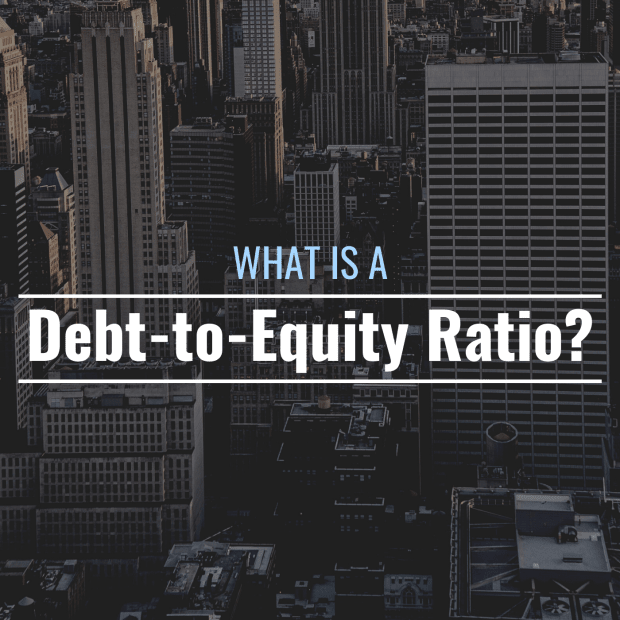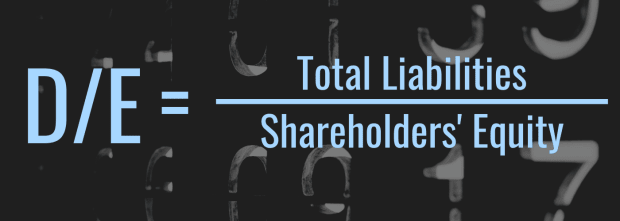
When a company’s operations or assets are funded primarily by debt, it is often described as leveraged. In order to determine just how leveraged a company is, or to compare companies in terms of their respective reliance on debt, investors look at leverage ratios, the most popular of which is the debt-to-equity ratio, or D/E ratio.
What Is a Debt-to-Equity (D/E) Ratio?
A debt-to-equity ratio is a metric—expressed as either a percentage or a decimal—that examines the proportion of a company’s operations that is funded via debt (also known as liabilities) versus shareholders' equity.
If a company’s D/E ratio is 1.0 (or 100%), that means their liabilities are equal to their shareholders’ equity. Anything higher than 1 indicates that a company relies more heavily on loans than equity to finance its operations. Anything less than 1, on the other hand, indicates that a company relies more heavily on equity than debt.
How Do You Calculate a Company’s D/E Ratio?
To calculate a company’s debt-to-equity ratio, divide all of its liabilities (including both short and long-term debts) by its total shareholders’ equity.
Note: All of these figures can be found on a company’s balance sheet.

D/E Ratio Formula
D/E = Total Liabilities / Shareholders’ Equity
D/E Ratio Example: Bed Bath & Beyond (NASDAQ: BBBY)
As of November of 2021, Bed Bath & Beyond reported short-term debt of $348 million, long-term debt of $2,713 million, and shareholders' equity of $554 million.
D/E = Total Liabilities / Shareholders’ Equity
D/E = ($348 million + $2,713 million) / $554 million
D/E = $3061 million / $554 million
D/E = 5.53
As of November 2021, BBBY's operations were financed by over five times as much debt than shareholders' equity.
What Does a Low D/E Ratio Mean?
The lower a company’s D/E ratio, the less reliant its operations are on borrowed capital. This is often a good sign, as the less leveraged a company is, the less likely it is to default on payments, become insolvent, or go bankrupt.
When it’s clear that a company will be able to continue to pay off its debts, it becomes more attractive to investors for two reasons. First, it is unlikely to get into financial trouble that could cause its stock to lose significant value—in other words, it’s relatively “safe”—and second, it will be able to continue borrowing money to fund expansion and development projects that could make its stock more valuable over the long term.
Lenders may be more willing to offer capital to companies with low D/E ratios, and the loans they are offered may come with lower interest rates since their likelihood of default is relatively low.
What Does a High D/E Ratio Mean?
A high D/E ratio suggests that a company is fairly reliant on borrowed capital for its continued operations. This is not necessarily a bad thing, as virtually all companies use debt to finance projects and growth.
For startups and newer companies undergoing expansion, in particular, a substantial amount of debt financing is completely normal. That being said, if a more mature business that isn’t growing rapidly has a D/E ratio much higher than its industry average, this could indicate that it is overly reliant on debt and could run into trouble if its earnings slip.
Risk-averse investors who value stability over growth potential tend to avoid investing too heavily in companies that are significantly more leveraged than their industry peers. Lenders may also be hesitant to extend credit to highly leveraged firms, so the more debt a company has relative to its equity, the higher interest rates it is likely to have to pay on new debt.
What Is a Good D/E Ratio?
D/E ratios vary significantly between industries and based on company age. For this reason, there is no clear line between “high” and “low” ratios, and what is considered “good” can vary depending on who you ask. In general, if a company’s D/E ratio is noticeably lower than the average for their industry, company size, and company age, it could be safely considered good.
Average D/E Ratio by Industry
Can a D/E Ratio Be Negative?
If a business’ D/E ratio is negative, this means that its shareholders’ equity is negative because it has more liabilities than assets. This would indicate that a business may be headed for bankruptcy, and its stock would likely have little value.
What Are the Limitations of the D/E Ratio?
Because what is considered a “normal” D/E ratio varies so much based on company age and industry, the metric isn’t particularly useful in comparing businesses that aren’t particularly similar. Additionally, companies can purposefully lower their D/E ratios by issuing preferred stock, which is listed under shareholders’ equity despite behaving more like debt.
What Other Leverage Ratios Are There?
Debt to total assets is another popular leverage ratio. Instead of comparing debt to equity, this metric compares debt to assets so investors can see how much of what a company possesses was paid for with borrowed capital. To calculate a company’s debt-to-total-assets ratio, divide its total liabilities by the total value of its assets. Anything above 0.5 (or 50%) indicates that most of a company’s assets were financed by debt.







